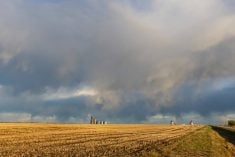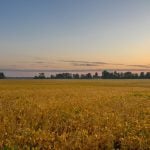Canola acreage in Canada is expected to increase in the upcoming Statistics Canada report, to be released on Tuesday (June 25), while spring wheat acres are likely to be lowered, according to analysts.
Some of the reasoning behind the expectations is that many observers thought StatsCan’s April estimates — 19.375 million acres for spring wheat and 19.133 million for canola — were out of line.
“In our opinion we thought that the spring wheat (projection) was maybe a little high and the canola was a little too low in the last StatsCan report,” said Jonathon Driedger, senior market analyst with FarmLink Marketing Solutions in Winnipeg.
Read Also

U.S. livestock: Cattle mixed on technicals, profit taking after tight supply rally
Chicago | Reuters – Chicago Mercantile Exchange cattle futures ended mixed on Wednesday as tight supplies and higher choice beef…
Driedger also noted that market trends may have caused a shift out of wheat acres into canola at planting time this spring.
“The market was showing pretty good incentive for farmers to put canola in the ground,” he said. “At the same time, the wheat market had definitely been sagging over the tail end of winter and into spring, which was creating a little less incentive to put wheat in.”
Jerry Klassen, manager of GAP Grains and Produits in Winnipeg, said there may be a shift out of wheat into canola due to the weather conditions seen across Western Canada this spring.
“I think farmers felt we also had a fairly cool, wet spring, which is favourable for canola,” he said. “I think (the weather) alleviated some concerns that the canola would undergo extensive heat later in the season.”
Earlier in the spring, there were some concerns that acreage might shift due to late planting. But farmers, for the most part, were able to follow their original seeding plans.
“There were high expectations for a later seeded period when the (StatsCan) survey was released in April, but I think as things turned out, the crop was seeded in a timely fashion,” Klassen said.
One crop that did suffer from weather-related problems was winter wheat. Some fields in Manitoba and Saskatchewan had to be abandoned because the crops didn’t overwinter well due to a lack of moisture in the fall.
Therefore, winter wheat acreage is expected to be lower, though Driedger isn’t sure whether Statistics Canada will lower its acreage number in the upcoming report or not.
“I’m not sure how Statistics Canada will do it; do they view those as no longer being winter wheat acres?” he said. “Or, do they view those acres as maybe coming out of (acres) harvested later on in the year, so you get a lower harvested number rather than a lower seeded number?”
Summerfallow acres are expected to be up slightly from the previous report due to wet conditions causing some acres to go in, but nothing more than in previous years.
“I think there might be a small abandonment rate like in a normal year,” Klassen said.
There may have also been some acreage shifting based on profit margins in other crops, but nothing too significant, Driedger said.
One crop that may have seen more acres seeded this spring, due to strong prices and good profit margins is barley, Klassen said.
— Terryn Shiells writes for Commodity News Service Canada, a Winnipeg company specializing in grain and commodity market reporting.
Table: Pre-report expectations ahead of Statistics Canada acreage survey results, to be released June 25, in millions of acres.
| Pre-report | April 24 | Actual acres, | |
| estimates | estimates | 2012 | |
| All wheat | 25.300 – 26.934 | 26.718 | 23.798 |
| Durum | 4.900 – 5.100 | 5.105 | 4.680 |
| Spring wheat | 18.600 – 19.770 | 19.375 | 16.939 |
| Winter wheat | 1.800 – 2.138 | 2.138 | 2.088 |
| Canola | 19.100 – 20.000 | 19.133 | 21.531 |
| Barley | 7.042 – 7.500 | 7.240 | 7.405 |
| Oats | 3.200 – 3.400 | 3.379 | 2.854 |
| Flax | 1.100 – 1.223 | 1.240 | 0.980 |
| Peas | 3.300 – 3.410 | 3.430 | 3.340 |
| Soybeans | 4.300 – 4.386 | 4.294 | 4.153 |
| Corn | 3.700 – 3.954 | 3.813 | 3.544 |
| Summerfallow | 3.900 – 4.700 | 3.522 | 4.485 |















